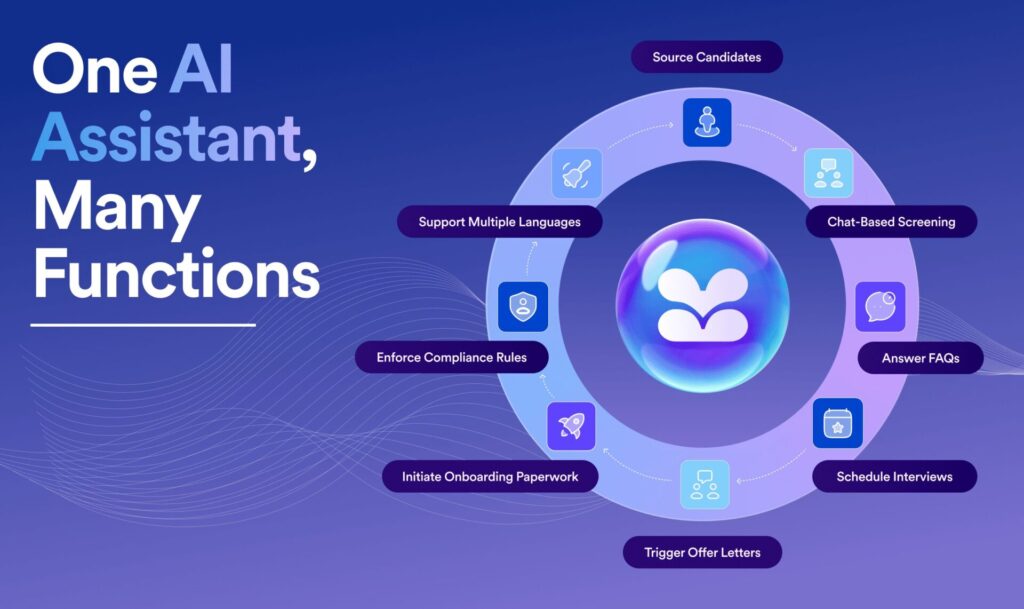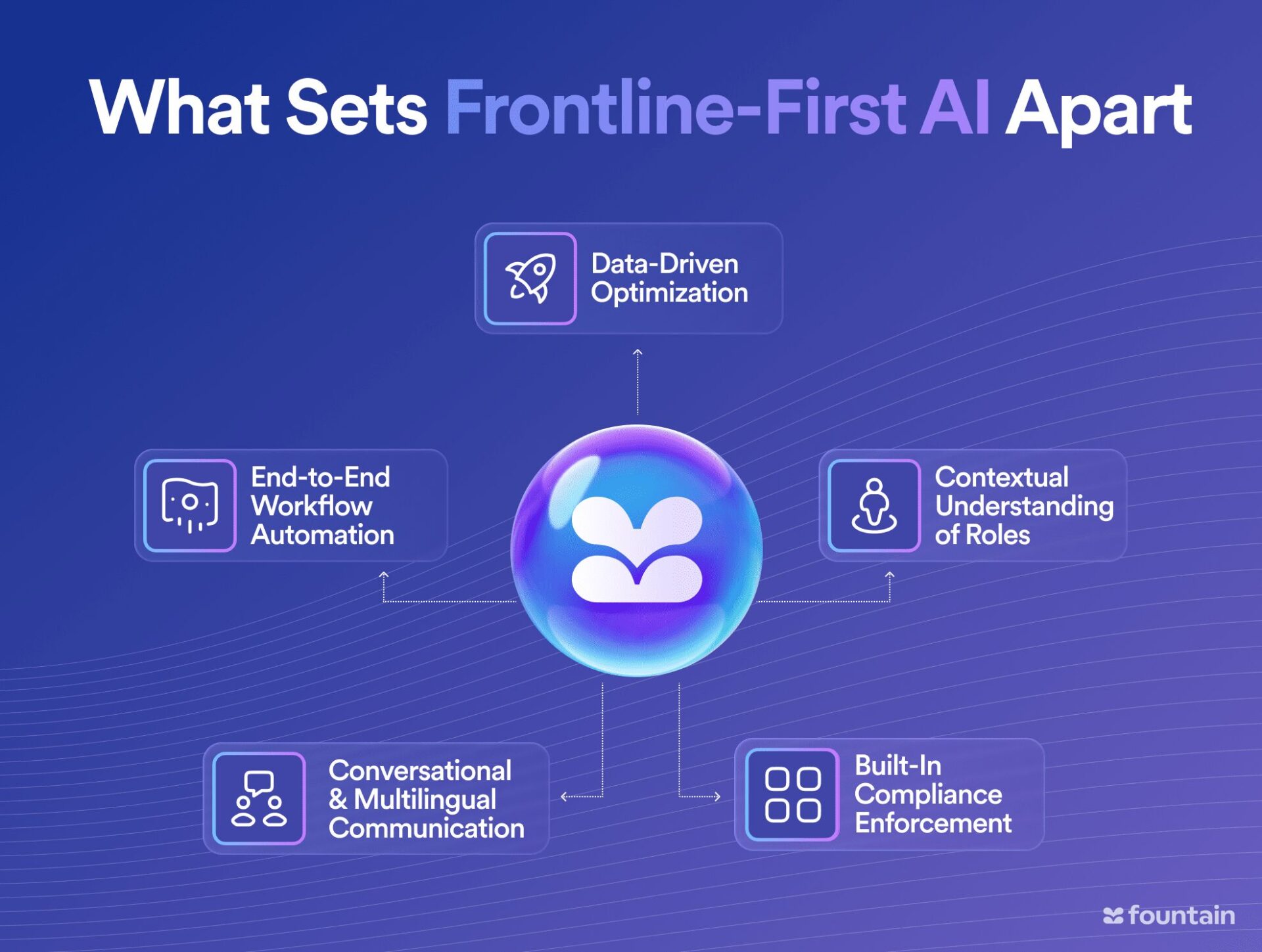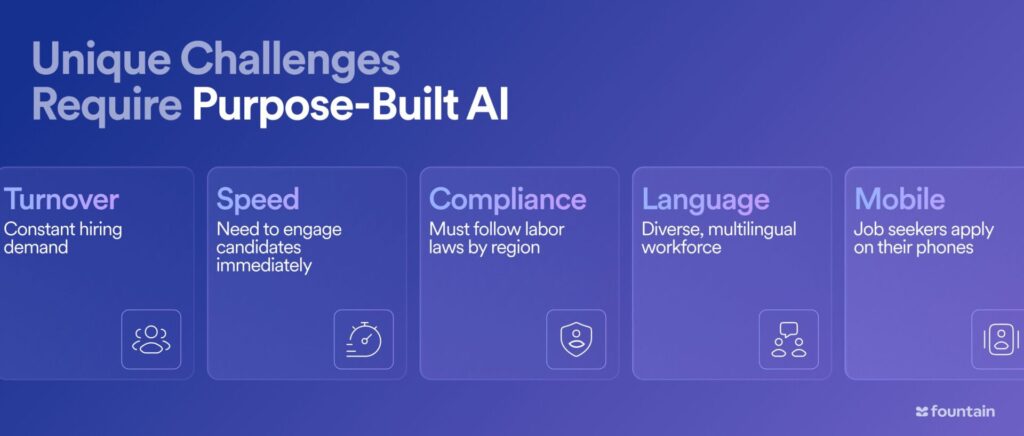
Frontline workers represent over 80% of the global workforce, but most AI hiring tools ignore their needs. Developers designed these tools for office workers who sit at desks, use stable internet, and submit formal resumes. That doesn’t reflect the reality of staffing restaurants, warehouses, hospitals, or retail stores.
As companies try to adapt corporate AI for shift-based roles, the mismatch becomes obvious. One industry report put it plainly: a one-size-fits-all hiring approach no longer works.
Where Frontline-First AI Wins in Hourly Hiring

1. High-Volume, Continuous Hiring
Hourly jobs see some of the highest turnover in the workforce. In sectors like fast food and retail, rates reach 87% and 81%, and many employees leave within just 120 days. In 2024 alone, nearly 40 million people in the U.S. quit their jobs. Another 35 to 40 million are expected to do the same in 2025, even as overall quit rates begin to slow.
As a result, recruiters have to constantly hire to maintain adequate staffing levels. Conventional AI tools, designed for occasional office hiring, can’t keep up. Frontline hiring is a continuous, ongoing process. Employers need systems that operate nonstop, not in bursts.
2. Speed Matters
Every day a frontline job remains unfilled leads to lost revenue. Candidates often accept another role within hours. Long applications, slow responses, and multi-step interviews lead to drop-off.
AI tools designed for salaried roles lack the speed required for frontline hiring. Frontline hiring requires real-time engagement to capture and convert candidates quickly.
3. Compliance Is Critical
Hourly work comes with strict labor laws that vary by region, including overtime limits, break requirements, and minor protections. A conventional AI system might miss key rules, putting companies at legal risk. In fact, only 11% of leaders say their organizations handle compliance effectively, highlighting just how vulnerable many businesses are.
Frontline AI must embed compliance into the process. It should enforce labor laws and verify eligibility as it screens and schedules candidates.
4. Language Barriers Are Common
Many frontline workers speak a language other than English at home. Tools that rely only on English or complex applications can alienate qualified candidates.
AI must communicate in multiple languages and use accessible channels like text messaging. When candidates feel supported, they’re more likely to complete the process.
5. Mobile Is the Norm
Most frontline candidates apply on their phones, often during breaks or in transit. They don’t have time to use desktop portals, write cover letters, or fill out long applications.
AI for frontline hiring must offer a seamless mobile-first experience. Without it, candidates drop off before they even finish applying.
Where Traditional HR Tech Falls Short
Conventional hiring platforms were built for salaried roles. They automate isolated tasks like resume scanning or sending emails. Developers did not design them to manage the speed, scale, and diversity of frontline hiring.
These systems often create delays between steps. They require manual input and offer little automation. In high-turnover environments, these bottlenecks lead to lost candidates.
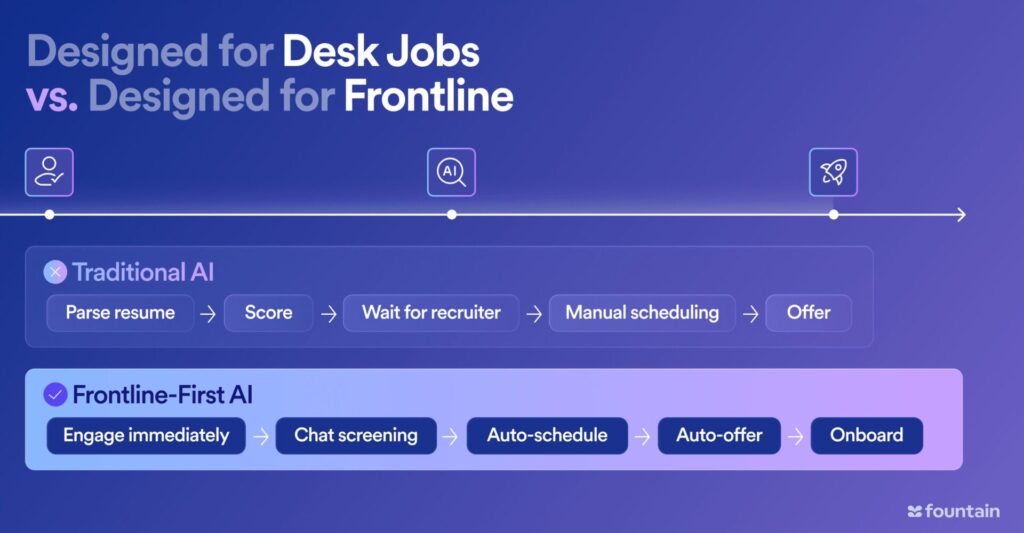
They also rely heavily on formal resumes or LinkedIn profiles, which many hourly applicants don’t have. If a candidate lacks a traditional background, these systems may disqualify them unfairly.
Even the candidate experience suffers. Complex applications, slow responses, and clunky interfaces lead to high drop-off rates. In some sectors, the rate reaches up to 80%.
What Sets Frontline-First AI Apart
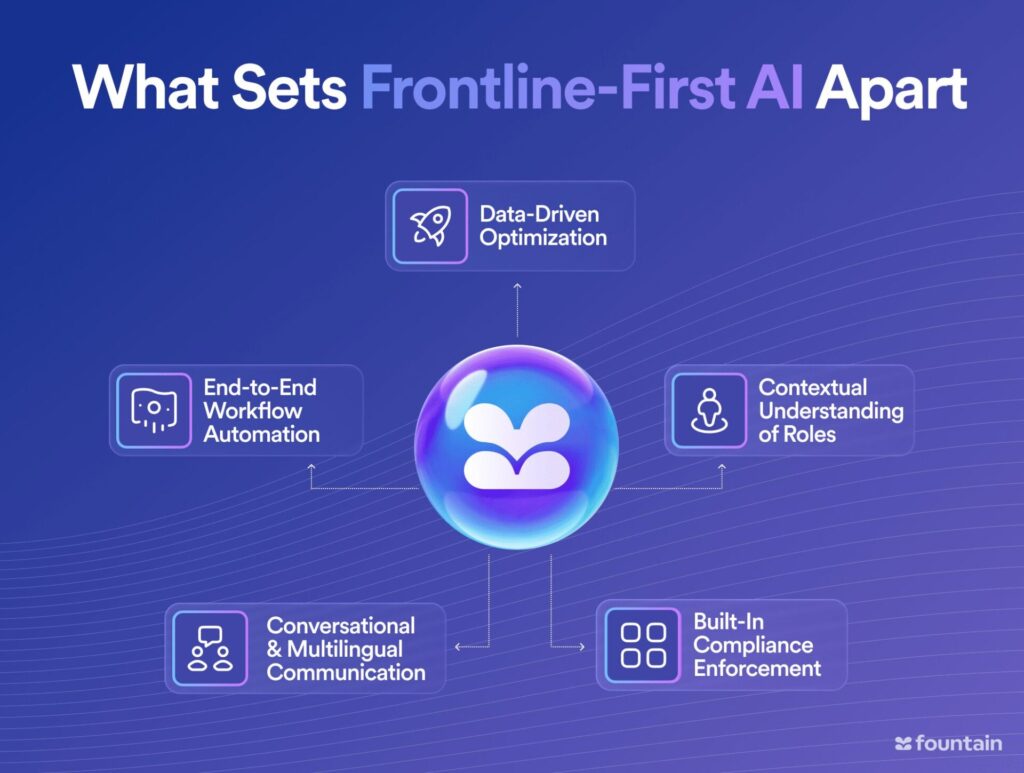
Frontline-first AI is purpose-built for hourly hiring. It does more than automate tasks. It understands frontline jobs, handles complex hiring needs, and helps candidates through every step.
1. Frontline-First AI Automates End-to-End Hiring
This AI sources candidates, screens them via chat, answers questions, schedules interviews, and starts onboarding all at once. If 100 people apply overnight, it engages each one immediately and schedules interviews by morning.
One company cut interview scheduling time by 79% with this approach.
2. Frontline-First AI Is Built for Real-World Hiring Needs
It asks the right questions—about shift availability, transportation, and physical requirements—not just education or past job titles. If a candidate does not meet the requirements for one position, the system recommends a more suitable alternative.
3. Frontline-First AI Ensures Always-On Compliance
It checks for required documents, flags eligibility issues, and enforces local labor laws as it builds schedules. The AI enforces rules like restricting 16-year-olds from working past 7 p.m. on school nights.
4. Frontline-First AI Engages Candidates Instantly
Candidates get texts, reminders, and updates without delay. They can confirm interviews by replying “Yes” or get answers to FAQs on the spot, in multiple languages.
5. Frontline-First AI Continuously Optimizes Hiring
Over time, the AI identifies effective patterns and adjusts its approach accordingly. It adjusts application flows, flags high drop-off points, and sends reminders based on historical no-show data.
Frontline-First AI in Action: Real Results
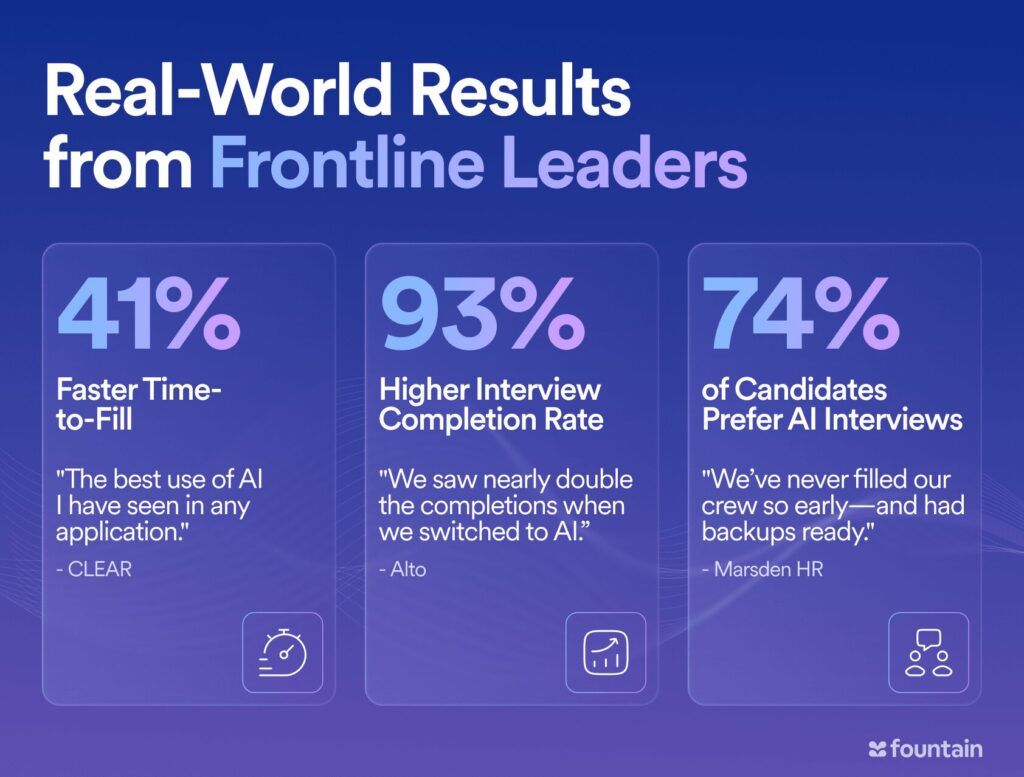
Faster Hiring
CLEAR reduced time-to-fill by 41% after using frontline-first AI. Their CTO called it “the best use of AI I have seen in any application.”
Higher Completion Rates
Alto, a rideshare company, switched from video interviews to live AI chat and saw a 93% increase in completion.
Candidate Preference
At Marsden Services, 74% of candidates chose an AI interview over waiting for a human. That candidate preference contributed to faster hiring and reduced attrition.
Stronger Pipelines
Marsden was able to fully staff a large cleaning crew ahead of a major event, with backup candidates ready. That level of readiness gives hiring teams a critical edge.
A Better Candidate Experience
Applicants feel respected when they get quick answers, clear communication, and mobile-friendly interactions. This improves Day 1 show-up rates and long-term retention.
Frontline-First AI Is a Strategic Advantage
This represents a strategic transformation, not just a technology upgrade. Frontline-first AI solves real day-to-day problems that hiring teams face. It delivers faster fills, better engagement, and stronger pipelines.
Avoid relying on tools built for desk-based roles. To hire effectively for shift-based positions, you need AI specifically designed for frontline workforces.
In today’s competitive market, it’s not just smart, it’s essential.
